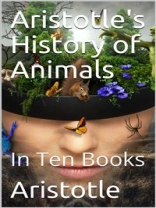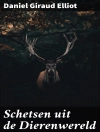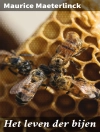History of Animals; (Latin: Historia Animalium ‘History of Animals’) is one of the major texts on biology by the ancient Greek philosopher Aristotle, who had studied at Plato’s Academy in Athens. It was written in the fourth century BC; Aristotle died in 322 BC.
Generally seen as a pioneering work of zoology, Aristotle frames his text by explaining that he is investigating the what (the existing facts about animals) prior to establishing the why (the causes of these characteristics). The book is thus an attempt to apply philosophy to part of the natural world. Throughout the work, Aristotle seeks to identify differences, both between individuals and between groups. A group is established when it is seen that all members have the same set of distinguishing features; for example, that all birds have feathers, wings, and beaks. This relationship between the birds and their features is recognized as a universal.
The History of Animals contains many accurate eye-witness observations, in particular of the marine biology around the island of Lesbos, such as that the octopus had colour-changing abilities and a sperm-transferring tentacle, that the young of a dogfish grow inside their mother’s body, or that the male of a river catfish guards the eggs after the female has left. Some of these were long considered fanciful before being rediscovered in the nineteenth century. Aristotle has been accused of making errors, but some are due to misinterpretation of his text, and others may have been based on genuine observation. He did however make somewhat uncritical use of evidence from other people, such as travellers and beekeepers.
The History of Animals had a powerful influence on zoology for some two thousand years. It continued to be a primary source of knowledge until in the sixteenth century zoologists including Conrad Gessner, all influenced by Aristotle, wrote their own studies of the subject.
Contents
Book I The grouping of animals and the parts of the human body. Aristotle describes the parts that the human body is made of, such as the skull, brain, face, eyes, ears, nose, tongue, thorax, belly, heart, viscera, genitalia, and limbs.
Book II The different parts of red-blooded animals. Aristotle writes about limbs, the teeth of dogs, horses, man, and elephant; the elephant’s tongue; and of animals such as the apes, crocodile, chameleon, birds especially the wryneck, fishes and snakes.
Book III The internal organs, including generative system, veins, sinews, bone etc. He moves on to the blood, bone marrow, milk including rennet and cheese, and semen.
Book IV Animals without blood (invertebrates) – cephalopods, crustaceans, etc. In chapter 8, he describes the sense organs of animals. Chapter 10 considers sleep and whether it occurs in fish.
Books V and VI Reproduction, spontaneous and sexual of marine invertebrates, birds, quadrupeds, snakes, fish, and terrestrial arthropods including ichneumon wasps, bees, ants, scorpions, spiders, and grasshoppers.
Book VII Reproduction of man, including puberty, conception, pregnancy, lactation, the embryo, labour, milk, and diseases of infants.
Book VIII The character and habits of animals, food, migration, health, animal diseases including bee parasites, and the influence of climate.
Book IX Social behaviour in animals; signs of intelligence in animals such as sheep and birds.
A Book X is included in some versions, dealing with the causes of barrenness in women, but is generally regarded as not being by Aristotle. In the preface to his translation, D’Arcy Wentworth Thompson calls it ‘spurious beyond question’.
Aristotle
Aristotle’s History of Animals / In Ten Books [PDF ebook]
Aristotle’s History of Animals / In Ten Books [PDF ebook]
购买此电子书可免费获赠一本!
语言 英语 ● 格式 PDF ● ISBN 9788832544190 ● 文件大小 2.1 MB ● 出版者 iOnlineShopping.com ● 发布时间 2019 ● 下载 24 个月 ● 货币 EUR ● ID 6925988 ● 复制保护 无












